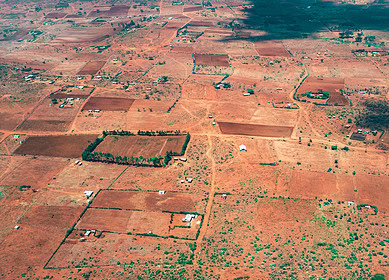India’s US$20-billion fertilizer subsidies inadvertently encourages overuse of fertilizers

India is at a pivotal moment in its agricultural evolution, facing the need to reform its extensive fertilizer subsidy program. Currently, the Indian government offsets the cost of fertilizers for manufacturers, allowing them to offer lower prices to farmers. This, however, obscures the real cost of products like urea, leading to its excessive use, which in turn causes severe soil degradation, water pollution, and a significant increase in greenhouse gas emissions. In 2017, for instance, overuse of nitrogen-based fertilizers contributed to a 57% increase in the country’s agricultural greenhouse emissions.
The subsidy system not only impacts the environment but also burdens the economy. For fiscal year 2024, approximately US$20 billion, or one-ninth of India’s total agricultural budget, is allocated to these subsidies, with about $715 million projected to be wasted due to diversion to non-agricultural uses or smuggling.
Another critical flaw in the current approach is the lack of incentives for farmers to test their soil or follow nutrient management recommendations. About 70% of Indian farmers use fertilizers without proper soil testing, worsening soil health and potentially diminishing future agricultural productivity, particularly in regions like the Indo-Gangetic plains where soil acidification has reduced crop yields.
The system also stifles innovation within the fertilizer industry, as manufacturers have little motivation to enhance production efficiency or develop environmentally sustainable products.
Recognizing these challenges, India has made some progress by tracking subsidized fertilizer sales through point-of-sale devices, reducing losses somewhat but not addressing the root issues of the system: farmers’ awareness of soil health, imprudent use of fertilizers, and overall environmental impact.
To address these concerns, a proposal has been made to overhaul the subsidy system by transferring funds directly to farmers’ bank accounts, linking the payments to soil health programs to encourage informed decision making and responsible usage. This could not only improve environmental outcomes but also save the government money by reducing run-off and enhancing the efficiency of fertilizer use.
The proposed model also involves leveraging India’s existing digital infrastructure, like the Aadhaar identification system and the Pradhan Mantri Jan-Dhan Yojana financial inclusion program, to ensure precise and corruption-free subsidy disbursement. Additionally, adopting a market-driven pricing mechanism for fertilizers and integrating subsidy payments with real-time soil health data could further enhance the sustainability of agricultural practices in India.
Source: Nature.com
Enjoyed this story?
Every Monday, our subscribers get their hands on a digest of the most trending agriculture news. You can join them too!
















Discussion0 comments